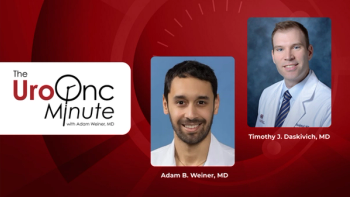
Nonoral treatment options maintain a vital role in ED treatment
Phosphodiesterase type-5 inhibitors are the first step in the treatment of erectile dysfunction. But about 30% of men fail to respond to PDE-5 inhibitors, noted Andrew McCullough, MD. Another 20% suffer significant side effects.
Phosphodiesterase type-5 inhibitors are the first step in the treatment of erectile dysfunction. But about 30% of men fail to respond to PDE-5 inhibitors, noted Andrew McCullough, MD. Another 20% suffer significant side effects.
"Only 50% of men are refilling their prescriptions for PDE-5 inhibitors," Dr. McCullough said at the Urology Congress. "These men are still unable to have sex.
"Too many physicians and their patients either don't realize that there are second- and third-line therapies or think that they are anachronistic," Dr. McCullough said. "Neither is true."
Second-line therapies such as intraurethral alprostadil (MUSE), vacuum constriction devices, and penile injections are appropriate for primary care physicians, he said. Third-line therapies, such as surgical implants and vascular surgery, are typically performed by urologists.
Intraurethral alprostadil requires the insertion of a small pellet of alprostadil into the urethra. It alleviates the need for needles and injections, Dr. McCullough said, is safe, localized, has no systemic side effects, and acts within minutes.
MUSE is also less effective than injection therapy, and induces transient penile burning in one-third of patients. Proper use requires both teaching and manual dexterity.
Vacuum constriction devices have been on the market since the early 20th century, Dr. McCullough noted. The devices nearly always produce an erection, but require training and manual dexterity.
Penile injection therapy is also highly effective and reliable and can be cost effective if patients use generic drug formulations. Injection therapy also has a 60% long-term dropout rate, can be cumbersome, and represents significant bother for many men.
Penile implants are designed to produce an erection on demand. These surgical implants carry an 85% to 90% success rate and are generally reserved for men who have failed first- and second-line therapies. But implants are irreversible and cost $8,000 to $15,000, Dr. McCullough cautioned.
Vascular surgery is designed to improve blood delivery to the penis. It remains an investigational procedure and is appropriate for less than 1% of ED patients, Dr. McCullough noted.
Newsletter
Stay current with the latest urology news and practice-changing insights — sign up now for the essential updates every urologist needs.
















